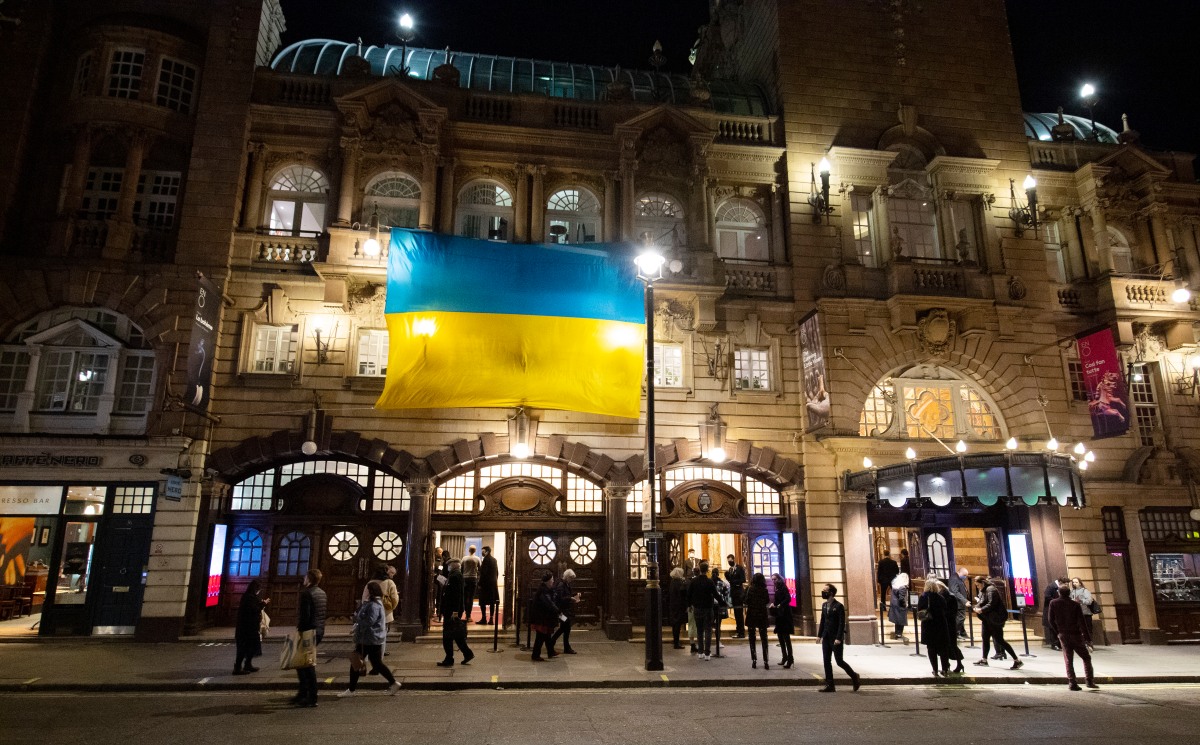In September 2021 we attended a gala at Sadler’s Wells organised by Putrov Productions to celebrate the 30th anniversary of Ukraine’s independence and its country’s “rich cultural heritage” (“7 SEP: Ukrainian Ballet Gala”). Despite the fact that the National Company dates back to the 19th century, this was their very first appearance in the UK, and a spirit of comradeship reigned over the evening as dancers from British ballet companies, international Ukrainian stars, and the Kyiv company shared the stage. Integral to the notion of independence was the eagerness to innovate: so in addition to well-known gala show-stoppers including the Don Quixote Grand pas de deux, Victor Gsovsky’s Grand Pas Classique, and Agrippina Vaganova’s Diana and Actaeon, a world premiere was presented. This was System A/I, choreographed by former Royal Ballet dancer Ludovic Ondiviela, with dramaturgy by the gala’s co-producer Olga Danylyuk, and starring Mayara Magri and Matthew Ball, current principals of the Royal Ballet.
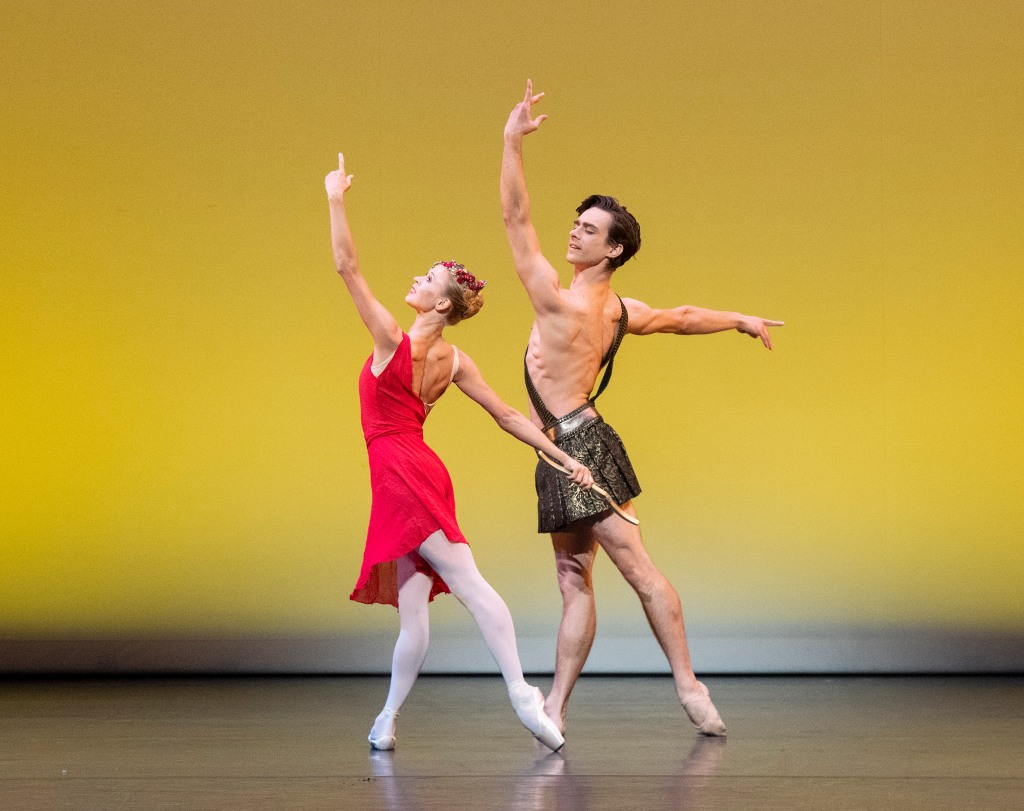
Natalia de Froberville & Francesco Gabriele Frola
Photograph by Elliott Franks.
Following such a celebratory event, Ivan Putrov could hardly have suspected that only seven months later he would find himself involved in a second Ukrainian Ballet gala in London, in very different circumstances. This gala, produced by the dance charity Inspiration in Motion, was the first of a spate of events organised in the UK in response to, caused by, or in some way affected by the Russia-Ukraine War. Therefore, we thought it might be interesting for our readers to have an overview of these events.

Ivan Putrov is, of course, well known to us from his years with the Royal Ballet and his Men in Motion (which recently celebrated its 10th anniversary). Although Putrov attended the Royal Ballet School, he was born in Ukraine and received his initial training at the Kyiv State Choreographic Institute. Such was his sense of urgency, that he had organised a fund-raising gala at the London Coliseum, Dance for Ukraine,by 19 March, that is, less than a month after the Russian invasion. Putrov’s co-director was Alina Cojocaru, a ballerina who needs no introduction to readers of British Ballet Now & Then. Lifelong friends, the two dancers trained together in Kyiv before studying at the Royal Ballet School and becoming colleagues at the Royal Ballet. Their insistence on the importance of solidarity, human values, and the power of art, music and dance in such a time of suffering and loss (qtd. in “Dance for Ukraine”) is surely what drove them to produce an evening that not only raised funds but was clearly a meaningful event for both performers and audience. The words of Tamara Rojo that we quoted in our “British Ballet at War”post come to mind:
Art does help you process; it does help you see your own situation from a different point of view; it does help you either process that situation or actually distract from that situation, which is equally valid.
(Tamara Rojo “The Art of Empathy” 13:25-14:22)
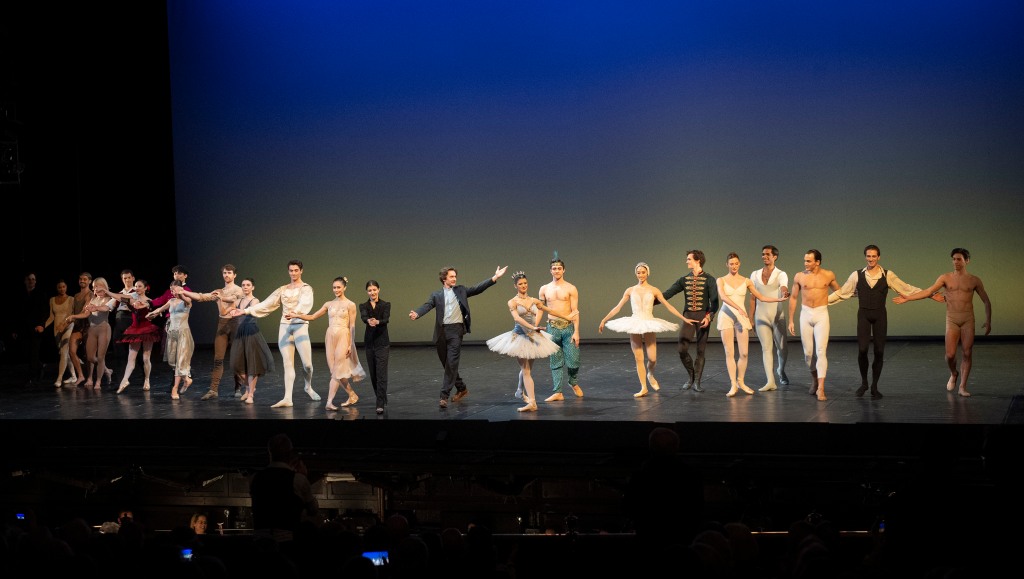
International ballet stars Dance for Ukraine in fundraising gala at the London Coliseum.
Photograph by Elliott Franks.
Debra Craine described the event as a “gala of incredible skill and spirit”. With the Ukrainian flag emblazoned over the front of the theatre, Dance for Ukraine opened with the country’s national anthem. While there were gala staples, including the Don Quixote Grand pas de deux and Balanchine’s Tchaikovsky Pas de deux, some pieces seemed particularly apposite to the occasion, such as the extracts from Liam Scarlett’s No Man’s Land, a work choreographed to mark the centenary of World War I, and Kenneth MacMillan’s Requiem. Although dancers from English National Ballet and the Royal Ballet were most prevalent, Birmingham Royal Ballet, Northern Ballet, Company Wayne McGregor and Paris Opera Ballet were also represented, as were a vast range of nations, including Russia and Ukraine. “A gala to remember” (Gilbert) that was subsequently streamed on Marquee TV to raise further funds.

Katja Khaniukova & Aitor Arrieta Choreography
Photograph by Elliott Franks.
In May, under the directorship of Viviana Durante, former ballerina with the Royal Ballet and current Artistic Director of English National Ballet School, British ballet schools also joined forces to present a gala, this time entitled Unite for Ukraine. And unite for Ukraine they did: performing in a variety of styles, and sharing a platform for the first time, the students created “an evening of goodwill and youthful enthusiasm” (Foyer).
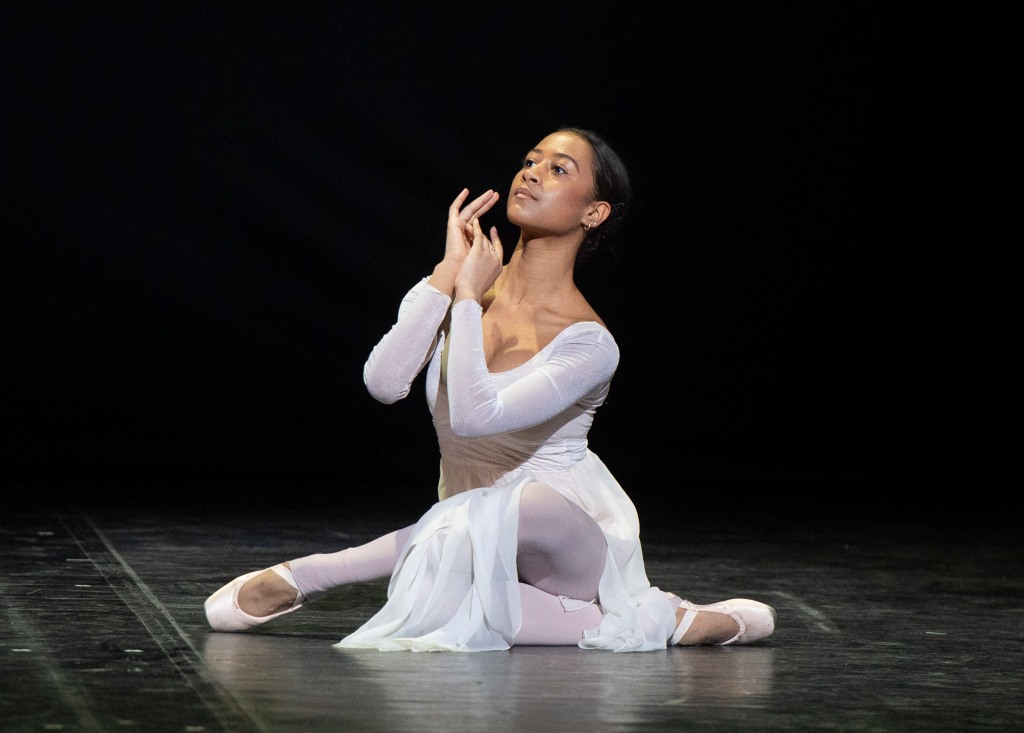
Photograph by Elliott Franks.
As we were doing our research for this post we discovered some performances by Ukrainian dancers that had already taken place on these shores, but of which we’d been completely unaware. On June 14th Kyiv City Ballet performed at Theatre Royal York after having been stranded on tour in Paris as a result of the Russian invasion. With their limited resources they decided to show a ballet class as well as excerpts of the classics from their repertoire. On the other hand, the story of the Freedom Ballet collective at the Edinburgh Fringe Festival in August is quite different. Freedom Ballet had been planning to perform at the Festival for some years but had never been able to fit it into their busy schedule in Ukraine. In order for the performances of their work Wardrobe to go ahead, the male performers had to be granted special permission by Ukraine’s Ministry of Culture to leave the country. But only for the month. At the end of August they returned to military duty in their homeland (“The Ukrainian Ballet Dancers”).
It will come as no surprise to you that for us the highlight of these events was the run of Giselle performances at the London Coliseum in September, performed by the United Ukrainian Ballet and produced by the Ukrainian-Russian choreographer and reconstructor Alexei Ratmansky. This extraordinary company started to come together in March of this year from dancers who had fled Ukraine, and as with the Freedom Ballet, male dancers needed to be granted special dispensation to leave Ukraine for the production of Giselle to be realised. Supported by the Dutch government, United Ukrainian Ballet is based in the Hague. They performed the premiere of their Giselle on August 13th in Alphen aan den Rijn before touring the Netherlands. The dancers hail from different areas of Ukraine, from different schools and companies and with a variety of performance experience, ranging from those who had only just completed their training to seasoned artists well versed in the ballet Giselle. To exacerbate matters, some of the dancers were initially not even in peak physical condition, not least due to Covid. For the London performances they were joined by Guest Artists Alina Cojocaru, Alexander Trusch (Principal Dancer of Hamburg Ballet, originally from Dnipropetrovsk), and Christine Schevchenko (Odessa-born Principal Dancer of American Ballet Theatre). Unfortunately Katja Kaniukova, who grew up, trained and performed in Kyiv before joining English National Ballet in 2014, was unable to perform at the Coliseum due to injury.
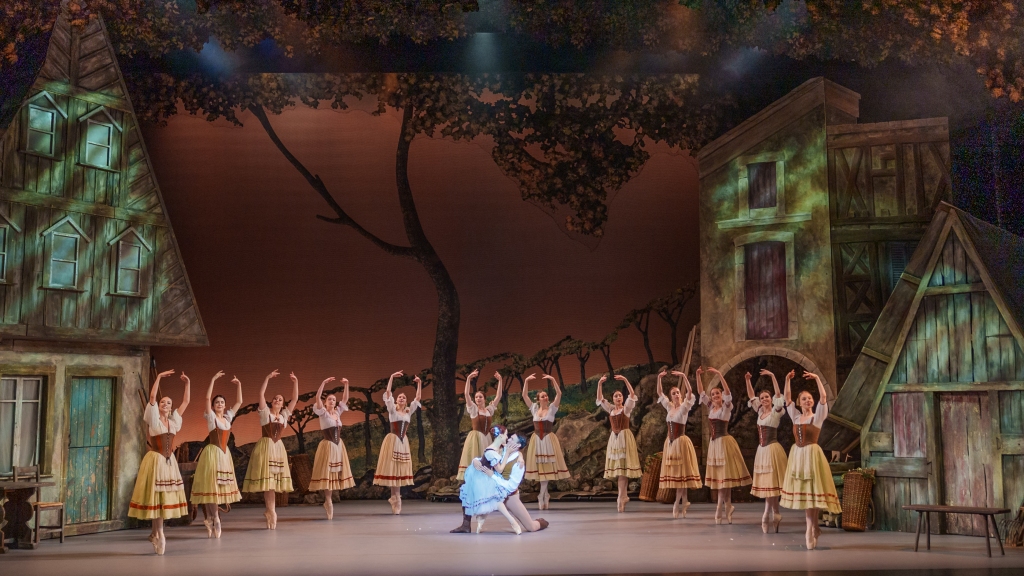
We have long been fascinated by the work of Ratmansky. Although veteran award-winning writer and dance critic Joan Acocella described Ratmansky as “the most sought-after man in ballet” over ten years ago, his work is not as well known in this country as we would like it to be. In 2013 he created 24 Preludes for the Royal Ballet, but otherwise his choreographies are performed here by visiting companies, such as the Bolshoi, Mariinsky, National Ballet of Canada and San Francisco Ballet. However, as historians, analysts and notators, we are particularly interested in Ratmansky’s reconstructions of 19th century ballets, on which he has been working since 2014, including stagings of Paquita (Mazilier, 1846/Petipa, 1881), The Sleeping Beauty (Petipa, 1890) and Swan Lake (Petipa/Ivanov, 1895). This list of reconstructions culminated in a new production of Giselle (Coralli/Perrot, 1841) for the Bolshoi ballet, which premiered in 2019 and was live streamed to cinemas in the UK. It was this production that formed the basis for the United Ukrainian Ballet mounting of Giselle.
For his reconstructions Ratmanksy refers to historical documents, such as production books, images (design sketches, lithographs, photographs), reviews, and music and dance notation scores. We found it interesting that for Giselle Ratmansky had access to the Stepanov notation written during the rehearsals for Anna Pavlova’s debut in 1903. This score is part of a set of scores written in the 1890s and early part of the 20th century in St Petersburg, including those he consulted for all of his other reconstructions, and the score used for Tamara Rojo’s recent production of Raymonda (Petipa, 1898) for English National Ballet. However, for Giselle, Ratmansky was also able to make use of notation that was written earlier, in the 1860s, by choreographer Henri Justamant, a score rediscovered only relatively recently. Unlike most notation scores, this one is available as a book, published by Georg Olms Verlag in 2008. In our opinion, it is the most beautiful notation you will ever encounter, consisting of simple but exquisite dancing figures accompanied by word notes, stage plans and sketches of some of the sets and props. An added attraction of this notation is that it requires no previous knowledge of the system, although it does require some knowledge of French.
We were sorely disappointed that we were unable to attend the opening night of Giselle, but we followed the lead-up to the London premiere with almost burning anticipation, checking out videos, press releases and casting, and attending a Zoom interview with Ratmansky organised by London Ballet Circle. The combination of Ratmansky’s passion for 19th century ballet and the vibrancy of the dancers brought an unusual freshness to the performances, inspiring headlines such as “a classic revitalised” (Jays) and “fresh steps and shimmering grace” (Levene).
Nineteenth century ballet, particularly in the Romantic period, was focussed on storytelling and characterisation, so mime was integral to the works.
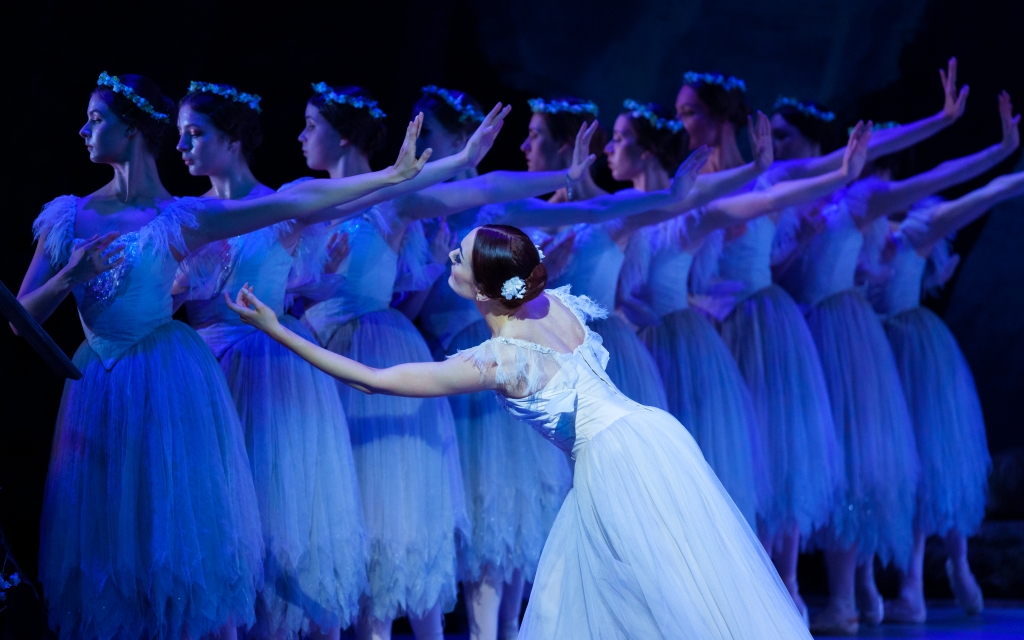
Perhaps as a result of the focus on abstraction in 20th century ballet, over time works from the previous century lost much of the mime from the original choreography. Seeing these passages restored in Giselle brought the narrative to life again and gave us the opportunity to reassess our standard understanding of the characterisation and plot, with a more feisty Giselle, a more sympathetic Bathilde, an Hilarion whose suspicions of Albrecht are more securely founded, and an Albrecht of greater depth and complexity.
There were two thrilling moments from Act II that differ from standard versions. These occurred at Giselle’s two major entrances. At the end of her first entrance, instead of running off stage, she runs to the middle of the stage forming the centre of a totally unexpected cross formation made up of the Wilis. Usually, later on, when the Wilis find Albrecht, Giselle runs down the diagonal of Wilis to Myrthe and directs her beloved to the cross on her grave for safety. In this production she and Albrecht run together in a circle, fleeing from the “furious” Myrthe and her subjects, (Justamamt 199), a circle that finishes with Albrecht lifting Giselle as they near the cross, making it appear as if they are both flying towards its sanctuary; as stated in the original libretto, “they glide together by the force of a magical power towards the … cross” (Vernoi de Saint-Georges, Théophile Gautier qtd. in Smith 237). Both of these moments were clearly notated by Justamant; and both of them heighten the mystical atmosphere of the stage action. Moreover, their impact was intensified by the conducting of Ukrainian Viktor Oliynyk, who struck a tempo much more akin to 19th century ballet performance than is generally the case, thereby contributing to the overall vibrancy of the performances we attended, led by Elizaveta Gogidzde (from Kyiv) on the Thursday matinée, and Christine Schevchenko on the Saturday eve in the title role.
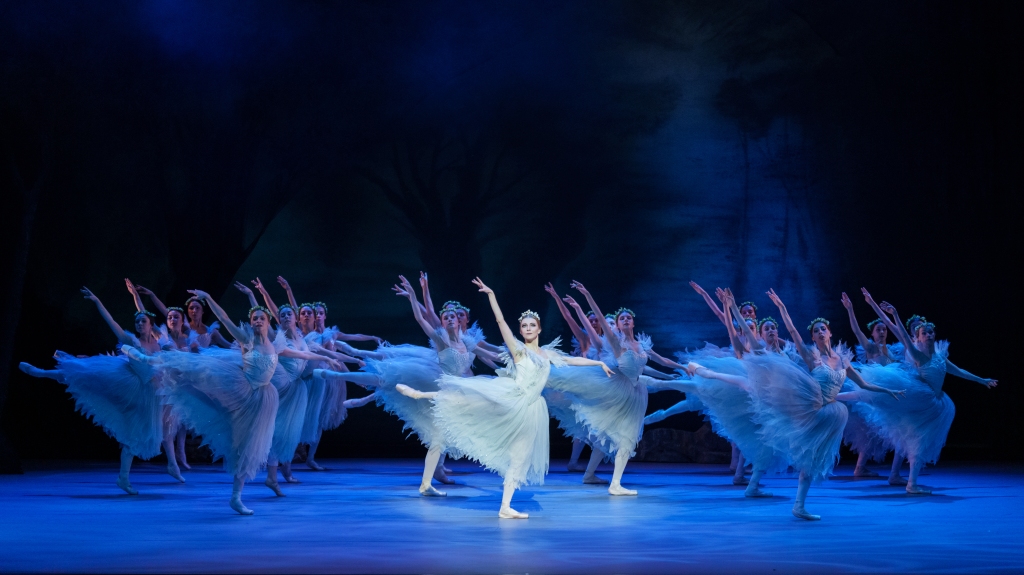
We cannot deny that we found it almost impossible to disassociate these performances from the devastating circumstances of the Company’s birth. However, even trying to view them through a clear lens of objectivity, they were fine performances. On the last night there was spontaneous applause for the corps de ballet in Act II during the famous passage of crossing arabesques voyagés. This would have been an achievement for any newly-formed company, never mind one that arose from the ravages of war. In our opinion, under the guidance of Ratmansky, the achievement of the Company was astonishing—as David Jays wrote, “little short of a miracle”. In fact, what we experienced were cohesive and utterly convincing performances that enabled us to see afresh a work that we’ve been watching for half a century.
The realisation of United Ukrainian Ballet’s very first production was aided by the donation of costumes and sets from Birmingham Royal Ballet, and the gift of English National Opera’s orchestra. All money raised is being given to the United Ukrainian Ballet Foundation, and the Disasters Emergency Committee Ukrainian Humanitarian Appeal.
During the short life of the United Ukrainian Ballet some dancers have felt compelled to return to their homeland. However, the fortitude of the Company seemed to be symbolised by their response to the death of Oleksandr Shapoval on the eve of their London debut. Shapoval had been a principal dancer with Ukrainian National Opera and teacher at Kyiv State Ballet School. Ratmansky paid tribute to him in these words:
Many of our dancers were friends with him, worked or studied with him. I remember Sasha so well, he danced in my first ballets in Kyiv. He died defending his land with arms in his hands. Eternal memory and gratitude to the Hero! … RIP Sasha we’ll continue dancing in your memory 💔 🇺🇦🇺🇦🇺🇦
A connected event that we saw on social media but sadly didn’t manage to catch in person was the Defiant Dancer installation in Covent Garden. On the day before the opening of Giselle, Schevchenko, dressed in a Romantic tutu, stood atop a mountain of sandbags—a reference to the practice of protecting statues and cultural monuments from destruction during wartime by encasing them in hundreds of sandbags. In the video Schevchenko performs port de bras to the sound of bombs and air-raid sirens, followed by music from Act II of Giselle. Throughout the course of the day she was replaced by other dancers from United Ukrainian Ballet. The video, although short, is a powerful watch (“Mother: a defiant dancer for the resilience of Ukraine’s arts and culture”).
In July, having visited Ukraine to explore the impact of war on the country’s culture, Jason Farago, critic at large, wrote:
With Russia trying to erase Ukraine’s national identity, the fight to preserve, and build upon, Ukraine’s artistic heritage has taken on new urgency …
this country’s music, literature, movies and monuments are not recreations. They are battlefields.
All of the ventures that we have discussed in this post are part of “the fight to preserve, and build upon, Ukraine’s artistic heritage”. While some of the dancers have fought or are fighting on the physical battlefield, others continue to fight on the battlefield of cultural identity by preserving and developing their Ukrainian ballet heritage.
🇺🇦 🌻 Slava Ukraini 🌻 🇺🇦

© British Ballet Now & Then
References
“7 SEP: Ukrainian Ballet Gala at Sadler’s Wells Theatre”. Ukrainian Events in London, 2 Sept. 2021, https://ukrainianlondon.co.uk/ukrainian-ballet-gala/.
Acocella, Joan. “The Most Sought-After Man in Ballet”. The New Yorker, 20 June 2011,
https://www.newyorker.com/magazine/2011/06/27/dance-with-me.
“The Art of Empathy: Renée Fleming and Tamara Rojo on Creativity and Wellbeing”. The Female Quotient, 15 May 2020, https://www.facebook.com/FemaleQuotient/videos/172377800811211/?vh=e.
Craine, Debra. “Dance for Ukraine review — a fundraising gala of incredible skill and spirit”. The Times, 20 Mar. 2022, https://www.thetimes.co.uk/article/dance-for-ukraine-review-a-fundraising-gala-of-incredible-skill-and-spirit-x3h3dzvk8.
“Dance for Ukraine”. Dancing Times, 15 Mar. 2022, https://www.dancing-times.co.uk/dance-for-ukraine/#:~:text=A%20charity%20gala%20directed%20by,(DEC)%20Ukraine%20Humanitarian%20Appeal.
Farago, Jason. “The War in Ukraine is the True Culture War”. The New York Times, 17 July 2022, https://www.nytimes.com/2022/07/15/arts/design/ukraine-war-culture-art-history.html.
Foyer, Maggie. “Top ballet schools Unite for Ukraine in a special London evening”. Seeing Dance, 18 May 2022, https://www.seeingdance.com/unite-for-ukraine-220517/.
Gilbert, Jenny. “Dance for Ukraine, London Coliseum, online review – a gala to remember”. The Arts Desk, 22 Apr. 2022, https://theartsdesk.com/dance/dance-ukraine-london-coliseum-online-review-gala-remember.
Jays, David. “United Ukrainian Ballet: Giselle review – a classic revitalised”. The Guardian, 14 Sept. 2022, https://www.theguardian.com/stage/2022/sep/14/united-ukrainian-ballet-giselle-review-coliseum-london.
Justamant, Henri. Giselle ou Les Wilis. Georg Olms Verlag, 2008.
Levene, Louise. “United Ukrainian Ballet’s Giselle offers fresh steps and shimmering grace”. Financial Times, 14 Sept. 2022, https://www.ft.com/content/8009586b-bfc7-4306-8569-87e41d88658e.
“Mother: a defiant dancer for the resilience of Ukraine’s arts and culture”. The Stable,
https://www.thestable.com.au/mother-a-defiant-dancer-for-the-resilience-of-ukraines-arts-and-culture/. Accessed 21 Sept. 2022.
Ratmansky, Alexei. “Today as United Ukrainian Ballet was preparing”. Instagram, 12 Sept. 2022, https://www.instagram.com/p/CibZeljqbyu/.
Smith, Marian. Ballet and Opera in the Age of Giselle. Princeton UP, 2000.
“The Ukrainian Ballet Dancers Waiting for a Call to War”. BBC News, 8 Aug. 2022, https://www.bbc.co.uk/news/uk-scotland-edinburgh-east-fife-62466488.
